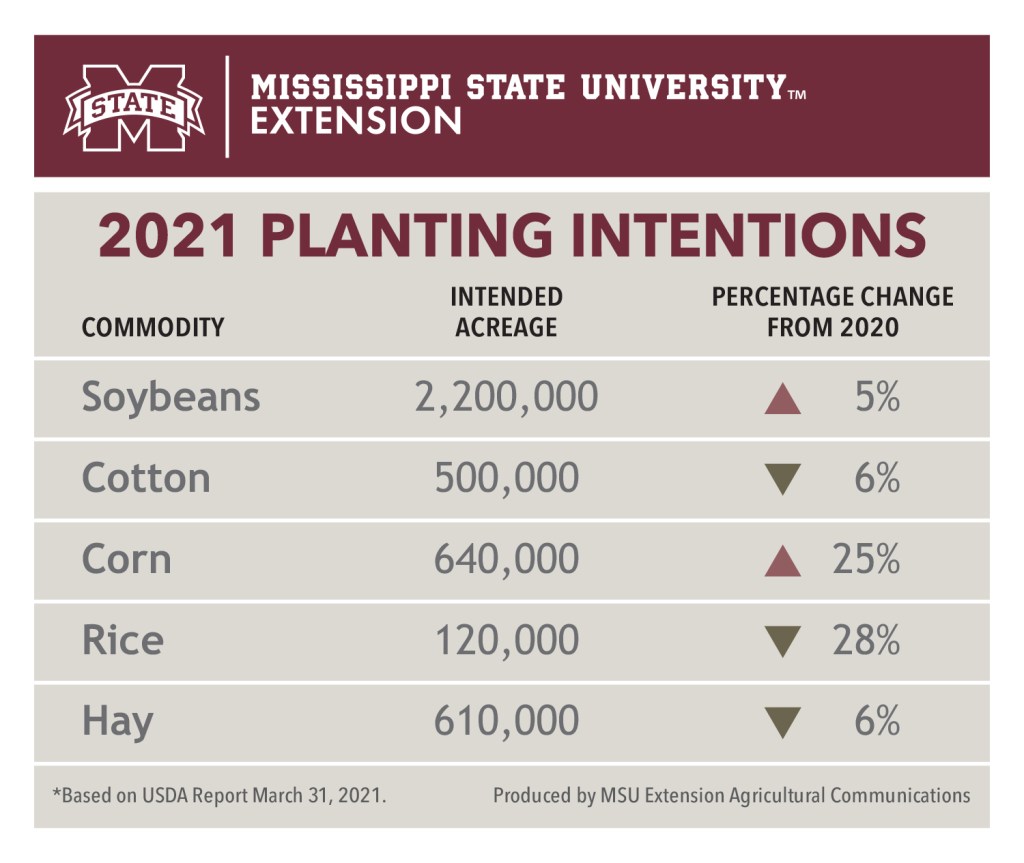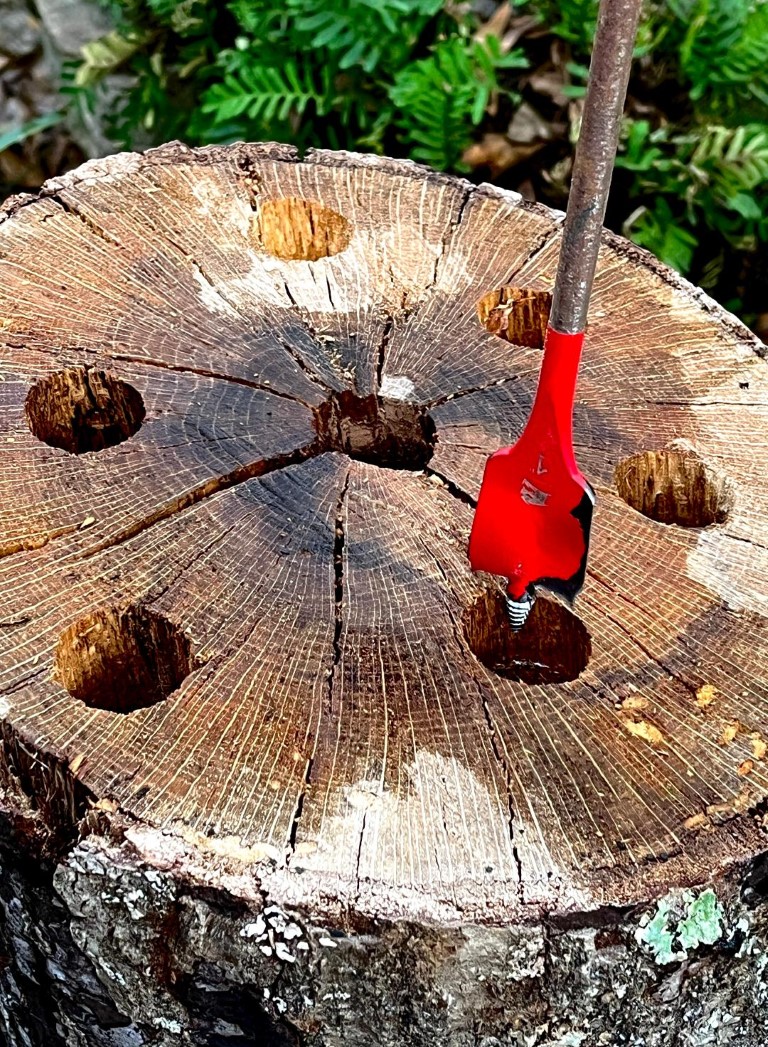Producers lock in 2021 planting intentions
Published 7:46 am Monday, April 5, 2021
By Nathan Gregory
MSU Extension Service
STARKVILLE – Mississippi row crop growers are planning to plant more soybeans and corn in 2021 than they did last year but not as much cotton, rice or hay.
The National Agricultural Statistics Service, a branch of the U.S. Department of Agriculture, publishes its planting intentions report each year at the end of March. This report provides a state-by-state estimation of how many acres of corn, soybeans, wheat and cotton farmers will plant in the upcoming growing season.
USDA estimates the state’s total row crop acreage for 2021 will be around 4.18 billion acres. Last year, the state planted nearly 4.1 billion total acres. Will Maples, a row crop economist with the Mississippi State University Extension Service, said high commodity prices could push this projection even higher.
“A key surprise was the small increase in total principal crop acres nationwide. Given the current high commodity prices, it was assumed that farmers would try to plant as many acres as possible this year,” Maples said. “Both corn and soybean acres came in lower than expected and caused bullish reactions. After the intentions report was released, corn futures and soybean futures traded up at the daily limit. This very rarely happens in response to a USDA report.”
Soybean acreage in Mississippi is forecasted at 2.2 million acres, which would be up 5% from just under 2.1 million acres planted in 2020. Maples said current soybean futures are trading well above recent years, which fares well for the crop’s financial prospects compared to the last few years. The state’s 2020 harvest had a production value of more than $1.2 billion.
“Soybeans are trading high right now due to the extremely tight stocks the U.S. is currently facing. We are nearing soybean stock lows that we haven’t seen since 2013. As stocks get lower, prices react by going higher to ration the supply,” Maples said. “Given our current stocks and the planting intentions report, we are potentially setting up for a growing season that needs to have near perfect weather. Any drought or weather concern could easily push prices higher.”
MSU Extension soybean specialist Trent Irby said that optimism, coupled with mid-April being an ideal planting time for the crop, has Mississippi growers eager to get planters in their fields as soon as conditions allow.
“We certainly have a lot of wet fields right now, but things can dry out in a hurry this time of year if we can just catch a few warmer days with sunshine,” Irby said. “If we can catch a break from rain early this month, I expect we will see soybean planters moving in the very near future.
“If environmental conditions limit producers’ opportunities to plant intended corn acres,” he added, “I expect we will see an additional increase in soybean acres.”
Soybeans win out almost every year as Mississippi’s most planted row crop due to the wide variety of products made from soybean components, including margarine, plastics, pharmaceuticals, livestock feed and biodiesel fuel.
“China is buying large quantities of corn and soybeans from the U.S. as they attempt to rebuild their hog herd that was devastated by the African swine flu in recent years,” he said. “Purchases of soybeans have lowered U.S. soybean stocks to 120 million bushels, which is down 405 million from last year. This strong demand has come at a time when Brazil, our main competitor in corn and soybeans, has had some harvest difficulties. Chinese demand is going to continue to be a major market force.”
Maples said consumers wondering why some goods they regularly purchase cost more now than usual can blame demand from China causing soybean supplies to dwindle.
“High soybean prices are a relief to soybean farmers who have had a rough couple of years with the trade war between the U.S. and China depressing market prices,” he said. “On the other hand, soybean consumers, such as catfish producers, are seeing an uptick in feed costs due to higher soybean meal costs.”
Corn and cotton prices have also been attractive for producers in recent weeks. These two commodities fluctuate between Mississippi’s second and third most planted row crops. Growers intend to plant about 500,000 acres of cotton in 2021, a 6% dip from a year ago.
This year, corn acreage is projected at 640,000 acres, which would be a 25% increase from 2020’s plantings.
“Currently, U.S. corn accumulated exports to China this marketing year are over a 1,000% higher than they were this time last year,” Maples said.
USDA forecasts Mississippi’s rice acreage at 120,000, down 28% from 2020’s planting of 166,000 acres. Producers will also grow about 610,000 acres of hay, which would also be down by 6% from a year ago.
Rounding out 2021 projections are 80,000 acres of winter wheat — doubling last year’s total — and 25,000 peanut acres, which would be up 9% from last year.






